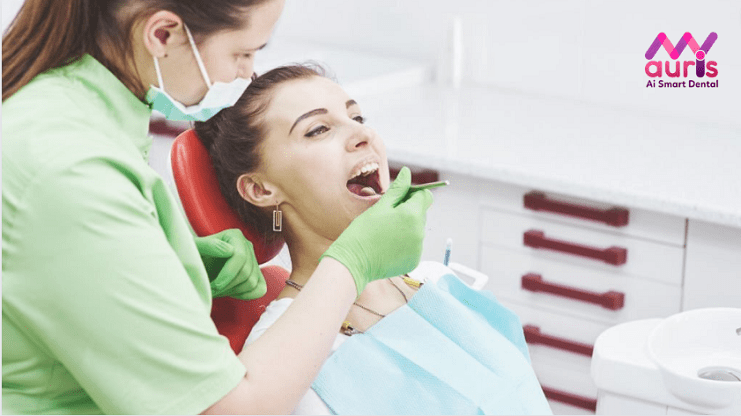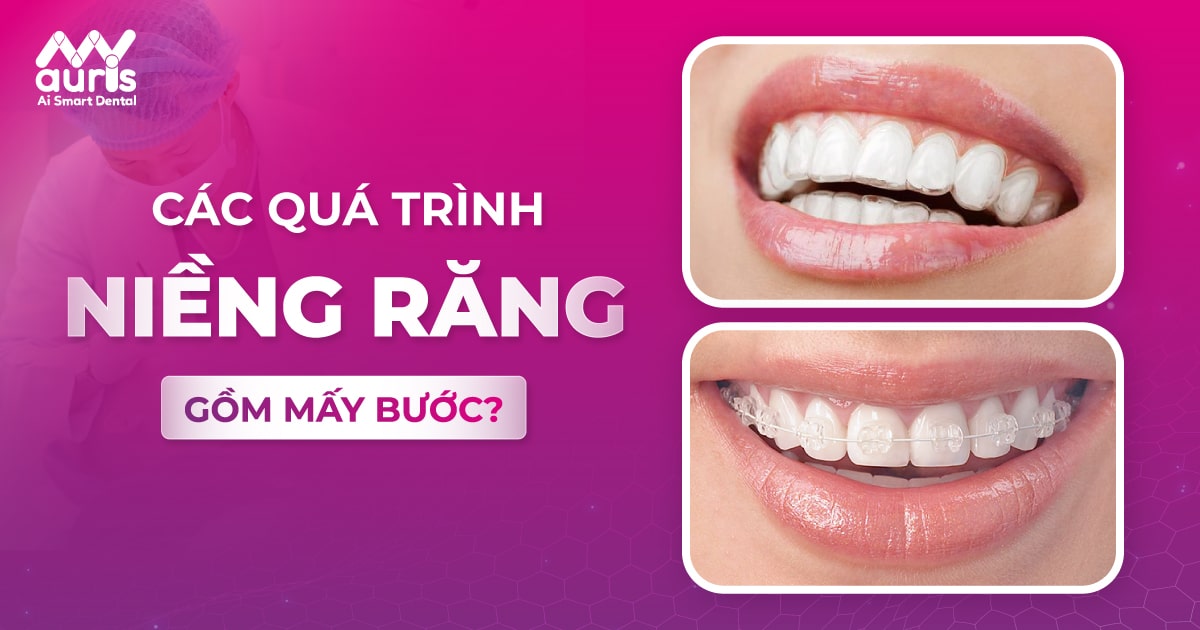Many customers seek orthodontic treatment to correct defects and oral health. Thanks to that, it brings a new, beautiful and strong set of teeth. So what steps do you need to go through in the braces process? In the article below, My Auris dentistry will answer all the details about the braces process so you can feel more secure when deciding to get braces.
How do the braces processes take place?
The braces method is commonly used to correct cases of dental defects such as buck teeth, underbites, misaligned teeth, etc. Besides, to achieve the highest efficiency, the braces process plays a very important role. The braces process is performed sequentially with the following steps:
Step 1: Examination and X-rays
This is the first stage entering the braces process, also known as pre-orthodontics. The orthodontist will conduct a general examination, take X-rays and take jaw impressions to check the degree of tooth misalignment.
After receiving the X-ray results, the doctor will assess the exact condition of the teeth, thereby being able to recommend a suitable treatment method with time and cost.
Step 2: Make a treatment plan and take jaw impressions
After you choose, choose the type of braces that suits your teeth condition. The doctor will develop a suitable treatment regimen to understand the ability of the teeth to move after braces.
Thereby, helping customers visualize their braces procedures in detail.
Step 3: General treatment
After agreeing with the doctor’s treatment regimen, treatment of dental problems (if any) such as tooth decay, periodontitis, and tooth extraction will be carried out for each specific case.
In addition, during this period the doctor will clean the teeth like a dentist. teeth, polish teeth, etc. to ensure clean and safe teeth.
Step 4: Attach braces or braces trays
These are the next braces stages of the braces process, which is attaching braces or transparent braces trays. This process, which can last several hours, is to make sure the braces do not peel off or slip off after being attached.
At the same time, to ensure the safety of the braces, doctors will give instructions on how to care for them and what to note when using braces.
Step 5: Monitoring and treatment according to each stage of braces
Depending on the orthodontic method, metal braces or clear braces, there will be time to follow up with follow-up appointments.different.
For braces with transparent plastic trays, the follow-up period is 7 – 10 days to replace the new braces tray. In contrast, traditional braces can last 2 weeks or 1 month to periodically tighten teeth. In case the customer shows signs of allergies or the braces fall off, a new one will be installed.
During the braces process, bracers need to pay attention to oral care and hygiene as well as daily eating habits to maintain the best braces results.
Step 6: Remove braces and wear retainer
Normally, braces will last from 18 – 24 months, short or long time will depend on each person’s jaw frame. However, after removing the braces, the doctor will check the bite and prescribe a retainer.
The purpose of wearing a retainer is to help keep the teeth from moving back to the old position and to fix the new position when braces are applied. The period of wearing a retainer can last for 6 months and can be worn continuously for 20 – 22 hours/day and the tray is removed when eating and cleaning teeth.
For cases of weak jaw arches, or the habit of brushing the tongue or breathing through the mouth, it is necessary to wear a permanent retainer to fix the teeth.

Some notes before and after the braces process
Before braces
- Determine clearly the condition of teeth: Before performing braces, you need to pay attention to determining the condition of teeth so that you can choose the most appropriate and best orthodontic method.
- Learn about types of braces: Currently, on the market there are many braces methods such as: metal braces, ceramic braces, lingual braces, transparent braces, etc. Each braces method has advantages and disadvantages suitable to the tooth configuration and needs of each customer. Therefore, you should research carefully and listen to the orthodontist’s advice to make the best choice.
- Choose a reputable dentist: To ensure the braces process is safe, you should choose a reputable and quality dentist.
After braces
- Proper oral hygiene and care: This is a top concern that not only applies to braces but also applies daily to protect daily oral health. Because the food we eat every day can easily stick to braces and wires if not cleaned. Over time, plaque will form, causing bad breath, tooth decay and gum disease.
- Diet when you first get braces: In the first days of braces, you should choose soft foods such as porridge, soup, milk, boiled foods, etc. because after the braces are attached you will feel pain or you are not used to the presence of braces or wires. After about 2 weeks of wearing braces, you can eat and drink more comfortably, but to avoid the braces coming off you should You should limit hard and chewy foods.
- Follow your doctor’s instructions: During the braces process, you need to seriously follow the doctor’s instructions and oral care notes so that your braces will be effective quickly.

The ideal age for braces?
The ideal age for braces? Basically, customers can apply braces from 12 to 50 years old. However, doctors will not recommend it Encourage customers to get braces at the age of 35 – 50 years old, because during this age the jaw bone will be weaker and the effectiveness of orthodontics will be examined. If braces are performed at this age, the orthodontist will check and evaluate your health condition, carefully advise on the method to consider the effectiveness of braces before implementation.
At the same time, The ideal age to get braces is from 12 to 35 years old. In particular, the most effective time for braces is from 12 to 16 years old, when the permanent teeth are completely replaced and the teeth are in the development stage. For those who cannot get braces in the golden stage, they can get braces at the age of 23 – 32 years old.
In addition, suitable subjects for braces are those who need to improve tooth defects, such as:
- Teeth with malocclusion
- Hooked teeth
- Undercut teeth
- Spreaded teeth
During braces procedures at My Auris dentistry. Orthodontists will accompany you and give you useful advice. If you have questions or encounter problems while wearing braces, you will receive quick support, thereby saving you time and meeting directly with the doctor to adjust the braces and wires. For more information and consultation on braces processes, you can contact us to achieve high orthodontic results.
Kim Dung





